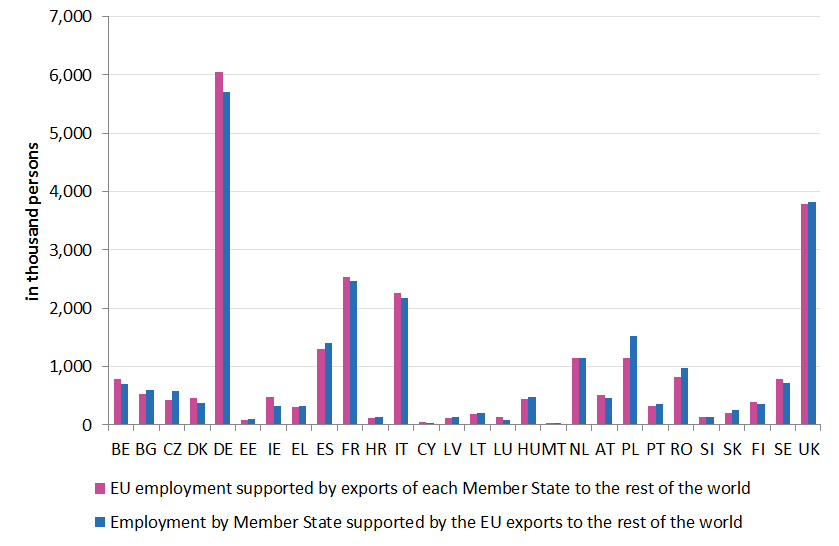New research shows that approximately 25.6 million persons were employed by EU firms, which are either directly or indirectly involved in the exports of goods and services. This 2010 data comes from the fully balanced EU inter-country input-output tables (FIGARO tables), recently released by Eurostat.
Input-output tables show how the production of goods and services are supplied to the various stakeholders in an economy (households, firms, government and foreign trade). They also show, for each sector, how its total value of production is used to pay for material inputs, labour and capital remunerations. You can see the tables here. FIGARO tables can be used to analyse the socio-economic and environmental effects of globalisation in the European Union (EU). Data is based on the European System of Accounts’ (ESA 2010) methodology.
By linking input-output analysis and EU employment data with the FIGARO tables, the relationship between trade and employment in the European Union and its Member States can be illustrated. For example, from the table below it can be seen that Italian exports to the rest of the world were responsible for the employment of 2.64 million persons throughout the EU in 2010. On the other hand, in Italy 2.17 million persons were employed due to EU exports to the rest of the world.

The FIGARO tables can also be used to compile and analyse air emission footprints. These capture air emissions that are linked to the end use of goods and services by the different economic stakeholders resident in a country (households, firms, non-profit organisations and government).
By the end of 2020, the FIGARO project aims to produce a time series of annual EU inter-country input-output tables (2010-2018) and five-yearly EU inter-country supply and use tables (2010, 2015).
For more information please contact us: estat-user-support@ec.europa.eu.

